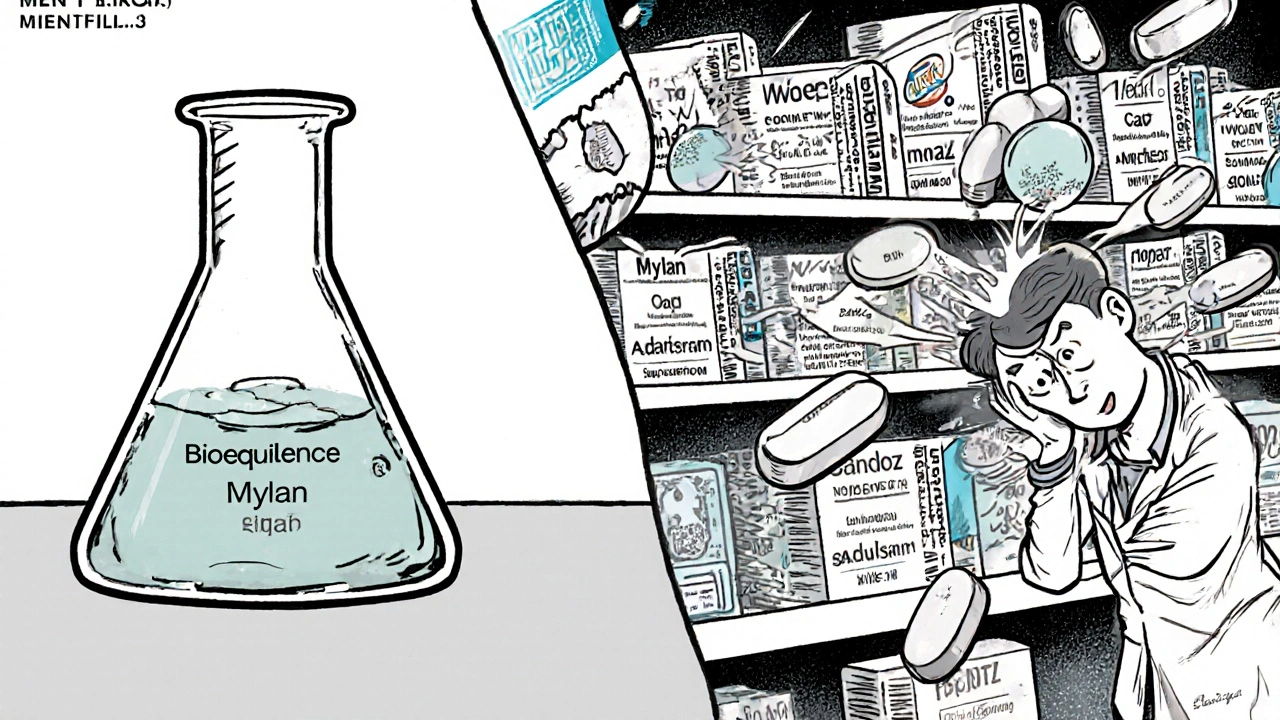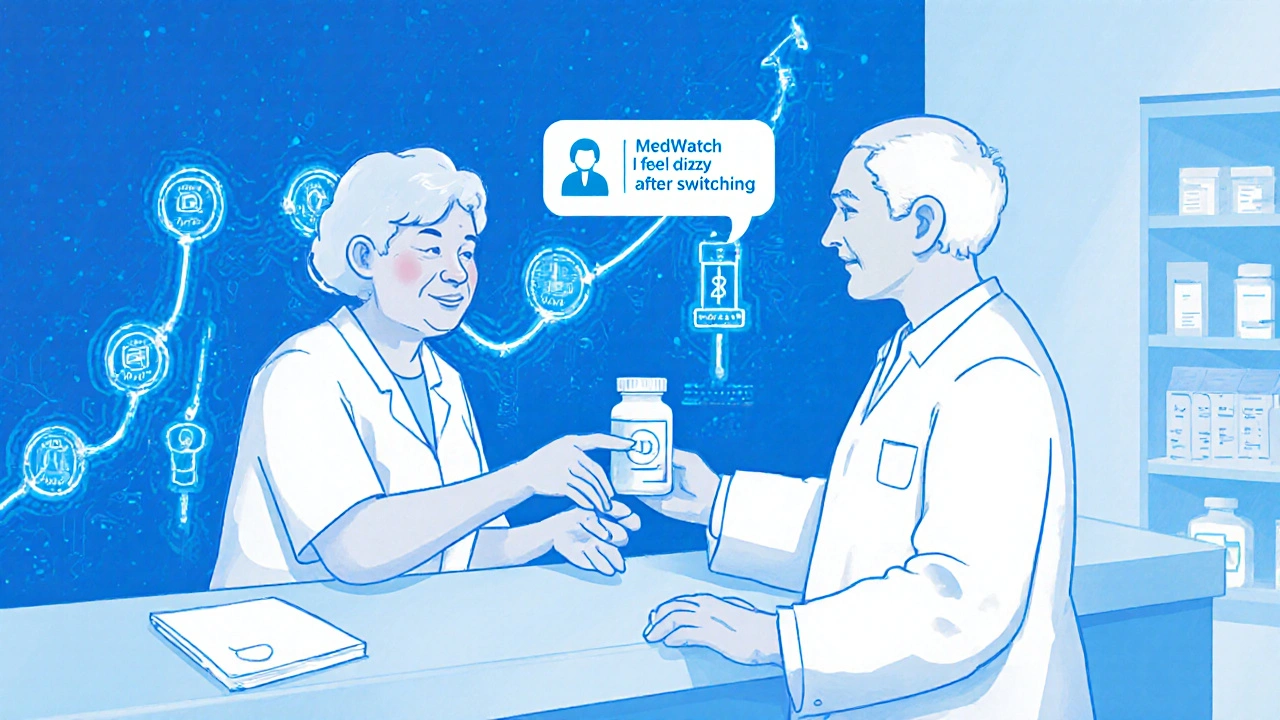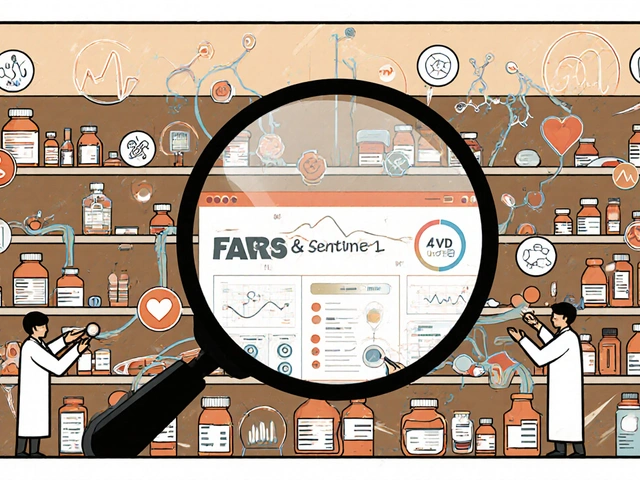When you pick up a generic pill at the pharmacy, you’re getting the same active ingredient as the brand-name version-at a fraction of the cost. But here’s the thing most people don’t know: generic drugs aren’t tested in large, real-world clinical trials before they hit the market. Instead, they’re approved based on lab tests showing they release the same amount of medicine into your bloodstream as the original. That’s called bioequivalence. It works for most people, most of the time. But what happens when something goes wrong after thousands, even millions, of people start taking it?
Why Generic Drugs Need Extra Monitoring
Brand-name drugs go through years of clinical trials involving thousands of patients under controlled conditions. These trials look for side effects, interactions, and safety risks. But generic manufacturers don’t repeat those trials. The FDA lets them skip that step because the active ingredient is identical. That’s the whole point-save money without sacrificing effectiveness. But biology isn’t a lab. Real people have different diets, other medications, chronic conditions, and genetic differences. Older adults, pregnant women, and kids aren’t always included in those early trials. And here’s where things get tricky: the inactive ingredients in generics can vary. Fillers, coatings, binders-these don’t affect the drug’s main action, but they can change how quickly it dissolves, how well it’s absorbed, or even trigger reactions in sensitive people. That’s why post-market studies exist. They’re not optional. They’re mandatory. Once a generic drug is sold to the public, regulators and manufacturers have to keep watching. Not because they expect problems-but because they know problems can hide until a drug is used by a diverse, large population over time.How the FDA Tracks Problems After Approval
The FDA doesn’t just wait for complaints. It actively hunts for signals using multiple systems. The main one is MedWatch, where doctors, pharmacists, and even patients can report side effects. Every serious reaction-like a heart rhythm issue, liver damage, or unexpected allergic response-must be reported within 15 days. Less serious ones go in quarterly reports. But reports alone aren’t enough. That’s why the FDA launched the Sentinel Initiative in 2008. It’s a network that pulls anonymized data from over 300 million patient records across hospitals, clinics, and insurers. Think of it as a giant, real-time safety radar. It can spot patterns: “Wait, people taking this generic version of metoprolol are showing up in ERs with low blood pressure more often than expected.” The FDA also reviews electronic health records, tracks prescription patterns, and even uses patient registries for high-risk drugs. For complex generics-like inhalers, patches, or injectables-the scrutiny is even tighter. A patch that doesn’t stick properly? A tablet that dissolves too slowly? Those aren’t just quality issues. They can mean the drug doesn’t work-or causes harm. In 2022 alone, the FDA conducted 328 targeted safety reviews of generic drugs. That’s up 27% from 2019. And 78% of all drug recalls that year were for generics-1,247 total. Most weren’t about the active ingredient. They were about manufacturing: inconsistent dissolution, wrong coatings, or contamination.What Kind of Problems Show Up Later?
Some issues only appear after years of use. A 2021 study in JAMA Internal Medicine found that 68% of serious adverse events linked to cardiovascular generics weren’t listed on the label when the drug was approved. That means doctors didn’t know to watch for them. Common reports include:- Transdermal patches that come off too early-leading to underdosing in chronic conditions like pain or hormone therapy
- Tablets that don’t dissolve properly in the stomach-causing inconsistent absorption
- Unexpected GI upset, dizziness, or fatigue after switching from one generic manufacturer to another
- Drug interactions that weren’t seen in small trials because patients were taking fewer medications

Manufacturers Have to Follow the Same Rules
You might think generic companies cut corners. But they don’t. The FDA holds them to the same standards as brand-name makers. Every generic manufacturer must have a full pharmacovigilance system. That means staff trained to collect, review, and report adverse events. They must track every batch, every lot number, and link reactions to specific products. The cost? On average, $1.2 million per company per year. For small manufacturers, that’s a big burden. But it’s non-negotiable. In 2021, Teva received a warning letter from the FDA for failing to report adverse events properly. The result? A six-month delay in approving new generic products. There’s also a system for changes after approval. If a manufacturer wants to switch a filler, change the tablet shape, or move production to a new factory, they must file a supplement with the FDA. Some changes are allowed immediately (CBE-0), others require 30 days’ notice (CBE-30), and major changes need full approval before distribution (PAS). The FDA reviews these based on risk. A change to a simple antibiotic? Lower risk. A change to an inhaler used by asthma patients? High risk. More scrutiny.Why It’s Hard to Pinpoint the Culprit
Here’s the biggest challenge: patients rarely know which generic manufacturer made their pill. The bottle might say “Metformin 500 mg,” but not “Made by Mylan” or “Made by Teva.” So when someone has a reaction, the report often just says “generic metformin.” The FDA’s own data shows that in 2022, only 35% of generic drug adverse event reports included the manufacturer’s name. That makes it nearly impossible to tell if the problem is with one specific batch-or if it’s a class-wide issue. Even worse, multiple companies can make the same generic. A single drug might have 10 different manufacturers. If one has a bad batch, but the others are fine, the FDA can’t easily isolate the problem. That’s why experts like Dr. Aaron Kesselheim from Harvard call the system “fragmented.” To fix this, some companies are testing blockchain technology to track every pill from factory to pharmacy. Pilot programs are underway at five major generic makers. If it works, it could change how safety data is collected-making it faster, more accurate, and more trustworthy.
What Patients Should Know
Most people take generics without issue. In fact, a 2023 Kaiser Family Foundation study found that 89% of patients reported no problems switching to generics for conditions like high blood pressure or diabetes. The cost savings are real-and life-changing for many. But if you’re on a narrow therapeutic index drug-like warfarin, levothyroxine, or seizure meds-stick with the same generic manufacturer if you can. Don’t switch unless your doctor or pharmacist says it’s safe. If you notice new side effects after a switch, write down the name on the bottle, the lot number, and the date you started the new version. Report it to your doctor-and ask them to file a MedWatch report. You don’t need to fear generics. But you should be aware. The system works because people speak up. If you feel something’s off, don’t assume it’s all in your head. Your report could help protect someone else.What’s Next for Generic Drug Safety?
The FDA’s 2024-2026 plan puts enhanced post-market surveillance at the top of its agenda. New tools are coming. The Sentinel Initiative’s “Common Data Model Plus” now includes social factors like income, housing, and access to care-because safety isn’t just about the drug. It’s about the person taking it. And in 2023, Congress approved $15 million through GDUFA III specifically for improving generic drug safety monitoring. That’s money for better data tools, more staff, and training for pharmacists on how to report effectively. The goal? To catch problems early-before they become widespread. To turn reactive reporting into proactive prevention. To make sure that the 90% of prescriptions filled with generics remain safe, effective, and trusted. It’s not perfect. But it’s evolving. And it’s working-because people are paying attention.Are generic drugs less safe than brand-name drugs?
No, generic drugs are not inherently less safe. They contain the same active ingredient and must meet the same FDA standards for strength, purity, and quality. But because they’re approved without large clinical trials, potential side effects that only show up in large, diverse populations may not be known until after the drug is on the market. That’s why post-market surveillance is critical-it fills the gap left by the abbreviated approval process.
Why do some people have different reactions to different generic versions of the same drug?
The active ingredient is identical, but the inactive ingredients-like fillers, coatings, and binders-can differ between manufacturers. These can affect how quickly the drug dissolves or is absorbed. For drugs with a narrow therapeutic index-like thyroid medication or blood thinners-even small changes in absorption can lead to noticeable side effects or reduced effectiveness. That’s why switching between generic brands isn’t always harmless.
How can I tell which company made my generic drug?
Look at the pill itself. Many generics have an imprint code (letters or numbers) stamped on the tablet or capsule. You can enter that code into the FDA’s National Library of Medicine’s Pillbox tool to identify the manufacturer. The pharmacy label may also list the manufacturer name. If you’re unsure, ask your pharmacist-they can tell you the source of your prescription.
What should I do if I think a generic drug is causing side effects?
First, talk to your doctor. Don’t stop taking the medication without medical advice. Then, note the name of the drug, the manufacturer (if known), the lot number, and when the side effects started. Ask your doctor to file a report with the FDA’s MedWatch program. You can also file one yourself at fda.gov/medwatch. Your report helps regulators identify patterns and take action if needed.
Is the FDA doing enough to monitor generic drug safety?
The FDA has significantly expanded its post-market surveillance tools since 2010, especially with the Sentinel Initiative and increased funding through GDUFA III. However, challenges remain-like inconsistent manufacturer reporting and the sheer number of generic products (over 10,000). Experts agree the system is improving but still relies too much on passive reporting. Future success depends on better data sharing, manufacturer accountability, and patient awareness.



Andy Slack on 10 November 2025, AT 04:37 AM
Just took my generic metformin this morning and felt weirdly jittery. Never had that with the brand. Didn’t think much of it until I read this. Now I’m checking the bottle for the manufacturer name. Weird how we’re just expected to trust the system when our bodies are the test subjects.